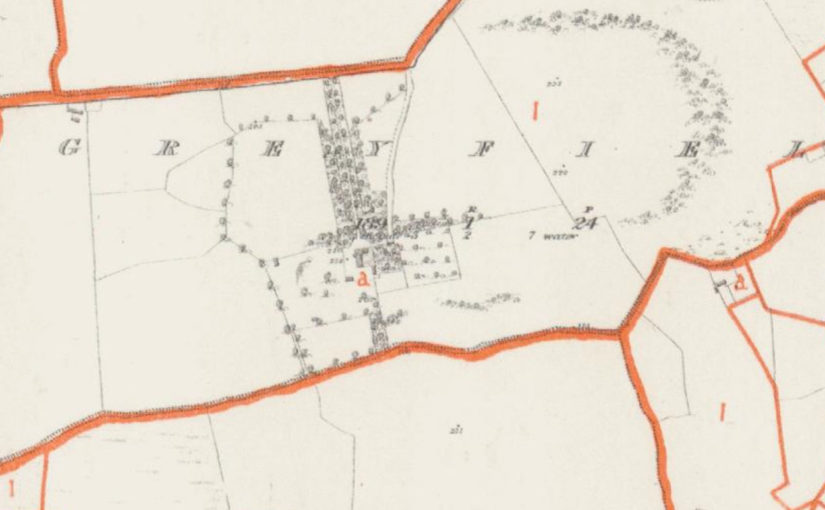I made a demonstration video of Planxty Toby Peyton, from Edward Bunting’s live field transcription of the playing of an old Irish harper in the 1790s.
Tag: manuscript
Mrs. Anne MacDermot Roe
Edward Bunting made what looks like a live field transcription of a tune titled “Mrs McDermottroe” or “Nanny O Donnely” on p. 18/18/27/f8v of Queen’s University Belfast, Special Collections MS4.29. Bunting made an edited neat copy on the facing page, and he published a piano arrangement in his 1797 book (No.53, Anna ni ciarmuda ruaidh / Nanny McDermotroe / Carolan). There don’t appear to be any independent variants of this tune, so the only way to understand it is to analyse Bunting’s very unsatisfactory notations.
Continue reading Mrs. Anne MacDermot RoeOld Irish harp transcriptions project
I first got hold of a facsimile of Bunting ms29 (Queens University Belfast, Special Collections, MS4/29) when it was first published online at QUB Library web site, back in 2006, and I have been working from the facsimile ever since.
Continue reading Old Irish harp transcriptions projectPlaying the harp in the Linen Hall Library
Yesterday I was at the Linen Hall Library in Belfast, for the conference or colloquium, A Celebration of The Beath Collection and the Bicentennial of the Irish Harp Society (1819-39)
The organiser, Lily Neill, had asked me to play some old Irish harp tunes to tie in with the music manuscripts and the early 19th century documents relating to the Irish Harp Society.
I took the new reconstruction copy of the NMI Carolan harp, which was delivered to me in Kilkenny by harpmaker Pedro Ferreira less than four weeks ago. So, this was the new harp’s first public engagement!
I played a couple of tunes I had found in the Collection, and some tunes associated with Irish Harp Society students Matthew Wall and Patrick Byrne.
Here is the full line-up for the day:
3:30pm-4:00pm
Dr. Mary Louise O’Donnell – “The Bengal Subscription and the Irish-Indian Connection”
Frank Bunting – “Edward Bunting’s Kilmore Parish Connections”
5:15pm-6:15pm
Philip McDonagh – “Do you remember Sinclair Stevenson? Reflections on the Irish Missionary Tradition in India”
Lily Neill – “The Emergence of the Lever Harp”
6:30pm-7:00pm
Simon Chadwick – “The Old Irish Harp”
Nicholas Carolan – “Some Irish Traditional Music Finds in the Beath Collection”







My header image shows a fragment of a manuscript which I played in my concert, from the Collection: Box 4, appendix 1, no.8
More from the Examples sheet
The third tune on Edward Bunting’s Examples of Irish Melody wanting the fourt and seventh, is Féileacán. Today I made two video demonstrations and also two transcriptions with fingering of this important tune.
Examples of Irish Melody
In my book Progressive Lessons, I included a full size full colour facsimile of Edward Bunting’s loose sheet titled “Examples of Irish Melody”. These settings of the three beginners’ tunes are interestingly different from the ones we have from Denis O’Hampsey and Patrick Quin, and I have been using them more and more in my teaching.
It is very interesting to work through these settings with complete beginners in my classes, as well as discussing the implications with my established students. It really feels like a proper system for playing the Irish harp in the old Gaelic tradition is starting to emerge.
The Cambridge 48 – an early 17th century composition
“But Cambridge forty-eight, for many years, was the greatest peal that was rang or invented” (Tintinnalogia p.2)
In Duckworth’s Tintinnalogia, published in 1668, he gives the full text of “three old peals on five bells, which (though rejected in these days yet) in former times were much in use” (p.15-17). I am interested in these three as rare testimony of the state of change ringing in its true infancy in the early to mid 17th century.
Continue reading The Cambridge 48 – an early 17th century composition
Here lies Lappin, harper’s king
Ann Heymann was probably the first person to spot the lyrics “Here lies Lappin” associated with Burns’s March, including them in her book Secrets of the Gaelic Harp (1988). Continue reading Here lies Lappin, harper’s king
Carlione
Looking through the books from the Jimmy Shand Collection in Dundee library for a tune to play on Saturday week at the free community concert in Dundee, I noticed “Carlione a Favourite Irish Tune” in Neil Gow’s third collection (1792). It is Dr John Stafford, or Carolan’s Receipt (no. 161 in Donal O’Sullivan’s index).
Whether or not I’lI get it up and running to play in two weeks time, it got me thinking about tunes titled with strange variants of Carolan’s name.
early 19th century Irish harp music
For my 10-minute set in next Friday’s 1817 bicentenary concert, I have been thinking about what tunes to play, and how to approach them.









